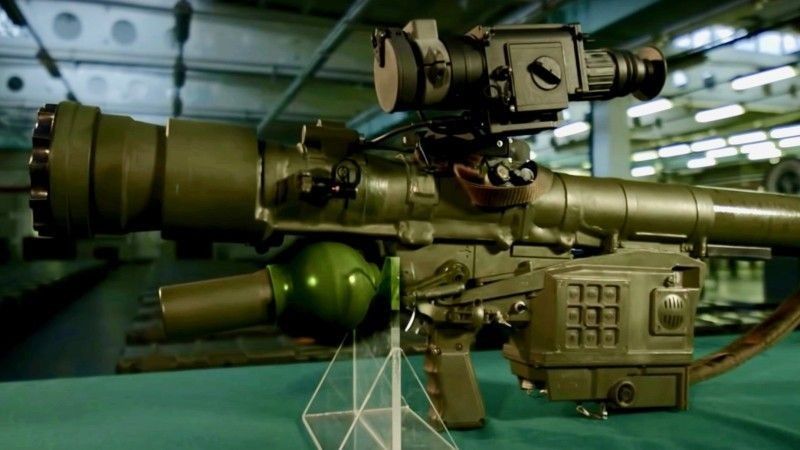Industry
Polish Piorun MANPADS Exported to US and Provided to Ukraine. A Success for Mesko Company

Photo. Mesko S.A./Defence24
As Defence24.pl has, Mesko company from Skarżysko-Kamienna successfully negotiated a deal with the US Department of Defense. The US Government order may eventually amount to several hundred MANPADS systems,. These are the latest VSHORAD assets operated by the Polish military. Piorun is a key element of the air defence system, and its primary role is to neutralize helicopters, attack aircraft, and UAVs.
The negotiation and contracting processes constitute yet another element of the PGZ Group's export campaign. One should stress that holistically, starting from the manufacturing stage, through monthly reviews with the Ordering Party, risk management, to the organization of the manufacturing processes, the project is managed in line with the US methodology. Mesko is implementing the new processes, based on experience gained by other companies of the Group - such as WZE, WZU, or ZM Tarnów, that have already gone through a similar path. Furthermore, the systems that we export are secured by an authorization system preventing unauthorized use - that system is being tightly controlled by the manufacturer. The solutions discussed guarantee the safety of use - both within the Polish Armed Forces, as well as when the systems are handed off to the Allies.
Przemysław Kowalczuk, Member of the Management Board for Development - MESKO S.A.
The acquisition of the Piorun system by the United States is a major feat of the Polish defence industry, as it would deliver equipment for a demanding user, also responding to the requirements voiced by the US Army - within the context of the threat posed by the Russians. The US Army needs to fill in the capability gap in the VSHORAD potential. For decades, the US military did not pay a lot of attention to this capability. Nonetheless, the course of the recent conflicts - including the one in Ukraine - has shown that the US troops deployed in the operational theater may face a threat posed by the enemy rotary-wing assets, or unmanned platforms.
The Americans, restoring their capabilities, assumed that MANPADS would be a solution, given the fact that systems as such are highly flexible and effective, with a relatively low cost. The first step towards the recovery of the VSHORAD potential was to increase the use of the Stinger systems. These have undergone a partial upgrade. It was, however, concluded that this may be insufficient and that more new generation, high-performance MANPADS weapons are needed, suited better to face the contemporary threats. This is why the Americans decided to procure the Piorun missiles. Before that, the US had also acquired a certain number of the Polish Grom systems, delivered in 2016 and 2018-2019. This might have influenced the decision regarding the acquisition of a new generation of the Polish system.
Grom and Piorun MANPADS are a critical element of core business for our company. Both products are available in export variants, and we have been experiencing sudden growth of interest, in the case of potential foreign customers. Not disregarding the requirements of our main customer, the Polish Armed Forces, we are successively expanding the export segment. Currently, we are engaged in several procurement processes for both missile types, where we see a major chance for potential success.
Elżbieta Śreniawska, President of the Management Board at MESKO S.A.
Piorun MANPADS has been developed as a result of a development project launched in 2010, by a consortium formed by Mesko S.A., CRW Telesystem-Mesko, and the Military University of Technology. The main goal was to develop a new MANPADS, via an upgrade of the existing Grom system. The development of the new design was finalized in 2015, while the public unveiling took place during the 24th edition of the MSPO event in Kielce, in 2016. Back then, the system also received a Presidential award.
In December 2016 the Polish Ministry of Defence signed a contract, concerning the delivery of 420 launch systems and 1300 missiles for the Polish Armed Forces, with the delivery deadline set in 2022. The Piorun missiles may be launched with the use of portable launch systems, or Pilica SAM systems operated by the Air Force, in a role of land-based air defence assets. Piorun may also be launched from the Poprad VSHORAD system, operated by all of the Army divisions.
Read more
When Piorun was being designed, the main goal was to increase the range and altitude at which targets could be detected and destroyed. Expansion of the capabilities was expected, in comparison to the Piorun's predecessor - the Grom MANPADS. The launch mechanism now works with the aiming system and features a target type switch that allows the user to select the guidance algorithm to match the threat. New observation instruments have been installed on a special purpose mount, and the launch system also features a new battery compartment and a new launch authorization solution.
The seeker was also modernized, with a new detector, new guidance algorithms, and a proximity fuse. The warhead, launch motor, and coolant were also subjected to modifications. The detection sensitivity, range, and the effective engagement range have been increased. The missile is also more resistant to any disruption or countermeasures. The missile is IR-guided and it can be used against a myriad of airborne threats, at night and during the day, at a distance of up to 6,500 meters, flying at altitudes ranging from 10 to 4,000 meters.
The newly emerging demand for delivery of missiles and ammunitions made it possible for the company to expand its key manufacturing capacity, domestically. This is a long-term process, tied to major investments in Skarżysko, and at other branches of the Mesko company. The export manufacturing required the implementation of extra solutions, in particular, this refers to compliance with the Aerospace Standard 9100 quality norms. For the company, it is both a challenge and a natural path towards the development of most of its domains.
Marcin Ożóg, Member of the Management Board at Mesko S.A., responsible for manufacturing
Piorun MANPADS systems would also be sent to Ukraine, to boost the nation's capacity to counter the Russian threat. A relevant request within that scope was already submitted by Mariusz Błaszczak, head of the Polish Ministry of Defence. It was approved by the Council of Ministers. The Ukrainian Armed Forces so far had been using the post-Soviet MANPADS, such as Strela or Igla, coming in several different variants. In recent weeks Ukraine has also received Stinger MANPADS, within the framework of support rendered by other NATO member states.
Read more
The export deal concerning the Piorun missile, and the transfer of those systems to Ukraine, pave the way for Mesko towards potential export deals. It is not a secret that the US market is very demanding, also when it comes to qualitative standards. At the same time, the US acquisitions are often perceived as a road sign by other countries, including ones working closely with the US military.
Currently, Poland is one of a few countries globally, offering and manufacturing MANPADS weapons, and holding complete intellectual rights. Meanwhile, more countries would be interested soon, in replacement of the Stinger system, which are becoming obsolete, and Post-Soviet Striela/Igla missiles. Grom MANPADS, the predecessor of the Piorun system, has been quite successful on the export market, as it was procured by Indonesia in 2007 (152 missiles for the Kobra air defence systems), Georgia in 2008 (30 launchers, 100 missiles, where they were also used in combat), and Lithuania in 2014 (unspecified quantities), and, finally - the missiles sold to US which we mentioned earlier. That could have been the key factor in paving the way for Piorun. All of the above shows that MANPADS is a weapon that has a bright future ahead, while Poland remains in possession of potential to offer such systems, both for its own Armed Forces, as well as foreign partners.


